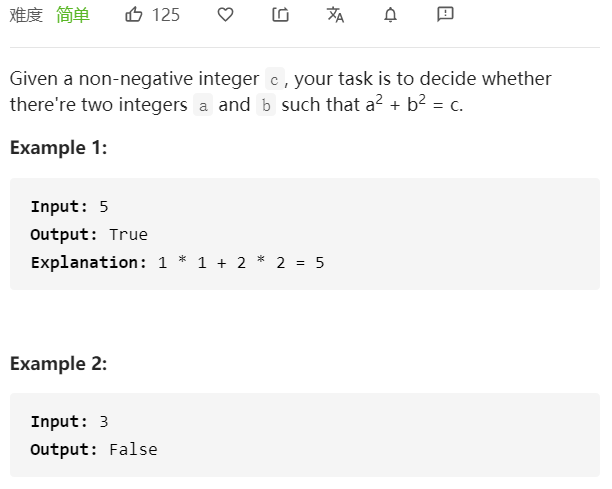
方法一:双指针
Python代码
def judgeSquareSum(self, c: int) -> bool:a, b = 0, int(c**0.5)while a <= b:if a**2 + b**2 == c:return Trueelif a**2 + b**2 > c:b -= 1else:a += 1return False
时间复杂度O(sqrt(c))
空间复杂度O(1)
方法二:遍历+Python开根号性质
Python中c**0.5得到的是float类型,所以我们可以使用这个性质
def judgeSquareSum(self, c: int) -> bool:for a in range(int(c**0.5)+1):b = (c-a**2)**0.5if b == int(b):return Truereturn False
时间复杂度O(sqrt(c))
空间复杂度O(1)
方法三:费马平方和定理
一个非负整数 c 能够表示为两个整数的平方和,当且仅当 c 的所有形如 4k+3 的质因子的幂次均为偶数。
也就是非负整数c能表示成多个质数相乘,比如8 = 2*2*2,比如18 = 2*3*3, 这些质数中形如4k+3的那些数,幂次必须为偶数,否则c就不能表示为两个整数的平方和
代码
def judgeSquareSum(self, c: int) -> bool:for i in range(2, int(c**0.5) + 1):count = 0while c % i == 0:c /= icount += 1if i%4 == 3 and count % 2:return Falsereturn c%4 != 3

